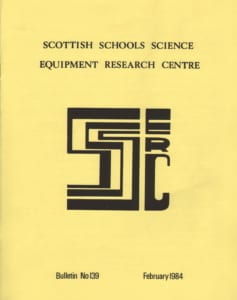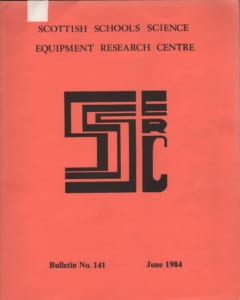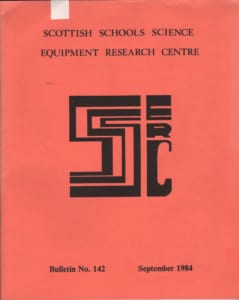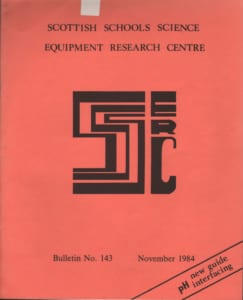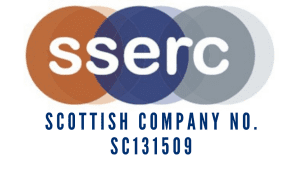The page numbers refer to the pages in the pdf. (The numbers in brackets are those given in the actual bulletin)
3(1) Introduction
ASE Annual meetings, CLEAPSE 21st, Cost index, CLEAPSE Guides
4(2) Syphons and cylinder
An unusual accident concerning a sulphur dioxide syphon.
4(2) Bell-jars
Yet another report of an implosion of an evacuated bell-jar.
5(3) Checklists for apparatus
We outline a framework for decision making, designing and documenting equipment needs for “Standard Grade” implementation.
8(6) Servo mechanisms
We have specially purchased a stock of quality motors fitted with very large reduction gearboxes.
8(6) Model loudspeaker
We have shown this model at a number of Foundation Science equipment exhibitions and have been surprised that people have not come across it before.
8(6) Model microphone and pulse detector
This idea of using a reflective opto switch as an analogue device came to us from Malcolm Ferguson of Edinburgh University physics department.
11(9) Variable focal length mirror
Using metalised polyester film.
12(10) Interfacing Notes
Erratum in “6502 Interfacing”
12(10) Trade News
20(18) Electronics & microelectronics course
The page numbers refer to the pages in the pdf. (The numbers in brackets are those given in the actual bulletin)
3(1) Introduction
Surplus equipment, Easter closures, Useful addresses & references.
3(1) Explosion in a fume cupboard
A teacher was heating magnesium powder and copper(ll) oxide in a crucible inside a fume cupboard, when it exploded.
4(2) ASE announcements
ASE Safeguards committee pronounces on Bell-jar impolsions, 12v heaters and preparation of chlorine.
4(2) HSE Guidance Notes
New guidance on PVC dust and using portable electrical appliances.
4(2) Microprojection and CCTV microscopy
How to allow several people at once to view microscope specimens.
5(3) A gaseous equilibrium
The equilibrium N2O4 — 2NO2 is usually examined as one whose equilibrium position can be altered by easily applied changes in conditions. We show a way of quantifying some of these observations.
7(5) Rubber rings
You might find Elastrator rubber rings for the I castration of lambs and young bulls very useful in science laboratories!
8(6) BBC analogue port
This article deals with calibration, precision and accuracy and will be relevant to other devices such as the I-Pack analogue port for the ZX-Spectrum.
13(11) Offset zero
Many data capture devices and analogue to digital converters have limited usefulness in that they can neither sample negative going signals, nor selectively amplify a small signal superimposed on top of a large d.c. component. This article outlines the principle of operation of an offset zero control which overcomes these limitations.
17(15) Fibre optics
Fibre optics provides a rich quarry for project based electronics.
24(22) Gaseous equilibrium—gas syringe support rig
Details of how to make a support rig.
24(22) Getting light into optical fibres
These notes describe the construction of a jig for holding together an optical fibre and LED.
27(25) Surplus Equipment
28(26) Trade News
30(28) Index to Bulletins 130-139
The page numbers refer to the pages in the pdf. (The numbers in brackets are those given in the actual bulletin)
3(1) Introduction
Normal service resumed asap, Research fellow, Scottish young scientist of the year, MEDC courses, Saturday opening, Cost index, Errata bulletin 140
5(3) CLEAPSE Guides
More CLEAPSE guides that may be borrowed from SSERC
5(3) Seeing the light – a shattering experience
An accident involving a l2V auto bulb.
5(3) “Networking”, an MCC report
6(4) Science and the Handicapped Pupil
There has been a developing policy of integrating pupils with special needs into ordinary neighbourhood schools. This is coupled with a very proper concern that such pupils share as fully as possible in all of the curricular elements on offer in the school. SSERC offers some advice.
7(5) Project Suggestions
At this time of year potential CSYS students begin looking for ideas for projects. We have a few ideas.
7(5) Egg Races
We would draw your attention to a recent publication from the British Association for the Advancement of Science and the British Association Young Scientists (BAYS), entitled “Ideas for Egg Races and other problem-solving activities.”.
8(6) Solar power
Simple demonstrations of motors driven by solar cells.
10(8) Toothpaste recipes
We publish additional information and recipes for pupil preparation of small samples of toothpaste.
12(10) Thermistor applications
Thermistor applications are presented as one possible easy way for biology teachers into the construction and use of simple circuitry. The advantages of thermistors in detecting small temperature differences of physiological significance are outlined, together with some of the associated snags.
The page numbers refer to the pages in the pdf. (The numbers in brackets are those given in the actual bulletin)
3(1) Introduction
Surplus equipment and publications offers, “SIR” and “Interfacing Extracts”, Periodic tables
3(1) Opinion
School animals and weekends
4(2) Animals in schools
This article seeks to apply established principles with hopefully a dash of common sense, to a specific operational problem, namely the appropriate care of animals in schools, particularly at times when the school is ‘closed’.
8(6) Ionising radiations
The “Education (Amendment) (Scotland) Act, 1984”. did not receive a great deal of publicity, despite the subject matter: two normally controversial issues, education and nuclear hazards. We explain the effects.
8(6) Safety publications
CLEAPSE/SSERC safety publications for sale.
9(7) Materials testing rig, a review
The device reviewed is a multi-purpose rig developed and marketed by the Scottish firm of Ross & Lamont. The rig was designed to carry out a range of tests and so allow the one device to meet the needs for such testing in the “Foundation Science” Core Topic “Materials”.
12(10) Offord microscope booklet
We review Offord’s recently published booklet, “A world to discover with a microscope — Book 1, Making a Start”.
13(11) Switching
SSERC offers support for the Microelectronics, Computing and the Curriculum (MCC) Project.
19(17) Surplus Equipment Offers
23(21) Precision motors
We are now able to offer additional sets of notes on different aspects of servo mechanisms.
23(21) Trade News
25(23) SCET Microelectronics Project Materials
The page numbers refer to the pages in the pdf. (The numbers in brackets are those given in the actual bulletin)
3(1) Introduction
Planning Committee, new members, Festive season closure, Technicians and the “Bulletin”, Buletin 143 – a pH special, SSSERC software service,
4(2) Surplus Equipment Offer
precision potentiometers5(30
5(3) CLEAPSE Guides
More revised CLEAPSE guides to borrow.
5(3) Dual range ovens
We have been asked to draw again the attention of readers to the need for care in the use of these devices. Particular care is needed in the use of dual purpose oven/incubators. This is doubly important where the device has a “Hi/Lo” range switch.
6(4) Encapsulated mains power supplies
Our concern is specifically with the usage in schools of encapsulated mains to low voltage supplies. They sometimes come in the form of mains adaptors; the 3 prong, 13 A plugs being an integral fitment to the device.
8(6) Microscope spares
Spare parts for the COC Models C & CA
9(7) Re-usable plastic Petri dishes
Field tests of re-usable polycarbonate petri dishes.
10(8) pH probe/Beeb interface
A description is given of the design, construction and performance of a home built pH meter comprising pH electrode, signal conditioning system and BBC microcomputer. Unlike conventional metery its hardware is kept very simple. Most of the signal conditioning is achieved by software, the hardware part consists of two elements only, a stable voltage reference and a very high impedance voltage follower.
21(19) Constant flow burette
A common way of producing a trace of the pH of a solution against the volume of titrant added to it has been simply to plot pH against time and hope that the rate of addition is fairly constant. This may be approximately true for the addition of the first 10-15 cm3 delivered from a full burette.
23(21) Measurement of gravitational acceleration
This is readily achieved with electronic timers, including VELA and GiPSI, using the traditional method of dropping a ball bearing through a height a and measuring the time interval of fall
24(22) Trade News

